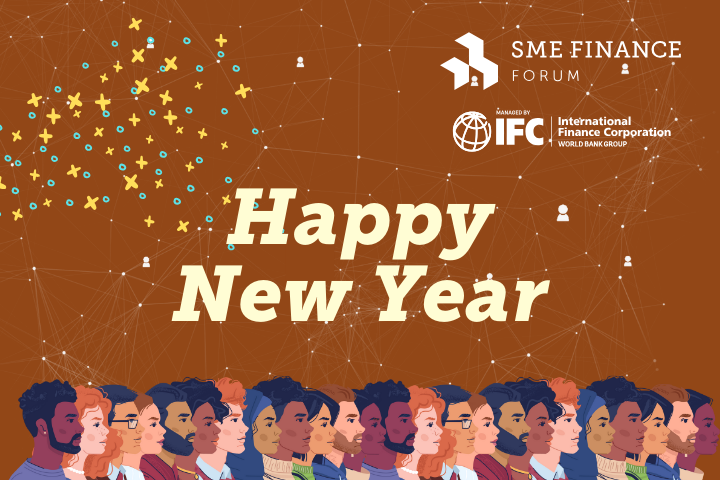Blog
Member Pulse Survey Q4 2022 – SME Finance in the Post-Pandemic Era

In December 2022, we launched our 11th pulse survey. We received responses from 119 member institutions operating in 194 economies. Among the respondents, 81 are lenders and 38 are non-lenders.
Level of Operation
The feedback from member institutions continues to be positive. 46 percent of respondents say their level of operation has already exceeded that in the pre-pandemic time. And 29 percent report that the current level of operation is about the same as that in 2019, which has increased from 25 percent in the last Pulse Survey in March 2022. For respondents whose operations still have not fully recovered from the impact of COVID-19, 58 percent expect to recover within the following 12 months.
Digital Transformation
Over the past two years, digital transformation has been one of the most trending topics of discussion in the SME finance industry and the result of our survey also shows that an increasing number of institutions have adopted new digital practices. In this survey, 75 percent of the members recognized that the COVID-19 crisis has significantly encouraged their institutions to transform digitally to adapt to the new normal, increasing from 69 percent in Q1.
The pandemic encouraged the SME Finance Forum members to digitalize their client operations and adopt new technologies. In terms of providing digitalized services to their clients, the respondents prioritized payment services (60%), KYC and Onboarding (52%), Loan Application (49%), and Loan Servicing (44%). Seventy-seven percent of the respondents adopted Application Programing Interface and 55 percent adopted cloud computing as part of the digitalization of their processes and services.
Partnerships between banks and FinTech companies have also gained new momentum since the COVID-19 pandemic. In the pulse survey, 50 percent of the respondents report that they have already partnered with a FinTech company to offer new digital financial products to their MSME clients, increasing from 44 percent in Q1. And 22 percent are a considering potential partnership with FinTech companies for new possibilities in offering digital services.
Lenders
The lenders’ performance continues to improve after the pandemic. 23 percent of the respondents say their current level of loan collection has surpassed that before COVID-19. And 46 percent of lending institutions report that their loan disbursement level has surpassed their pre-crisis level. It is a positive signal that the SME sector has recovered from the impact.
While 44 out of 81 respondents did not have a decline in lending, the other institutions that observed a decline have identified a few main reasons, including the increasing cost of funds or interest rates (32), deterioration in portfolio risk profiles (23), and liquidity support directed to SMEs from government or regulator (12).
Many of the members are still facing liquidity pressures. In the survey, the respondents point out that an increase in provisioning and collection expenses (36) and a decline/delay in loan collections (34) are the main sources of liquidity pressure. Some respondents have also mentioned local regulation changes and challenges in fundraising.
Compared to the last round of the pulse survey, more lending institutions have leveraged credit guarantees to facilitate MSME loan issuance. 54 percent of respondents acknowledged the role of credit guarantees in supporting new loan originations since the pandemic, increasing from 45 percent in March 2022. And 37 percent expect to see credit guarantees playing a more significant role in supporting loan originations in the following 12 months.
Similar to the survey results in Q1, lack of funding/high cost of funding (48) and riskier business due to economic outlook (47) are still identified as two dominant obstacles for lending institutions to meet new demands from SMEs in the following 12 months. Many lending institutions are also worried about higher foreign exchange costs (28), creditworthiness due to lack of reliable data (23), and tighter credit criteria (22).
Regarding the demand for new MSME loans, most lending institutions reveal confidence in the market. Fifty-five percent have witnessed an increase in the level of loan demand compared with the pre-crisis level, while only 46 percent reported an increase in Q1. And 27 percent of the respondents say there is a stable level of demand compared with that in 2019.
Non-Lenders
The responses from non-lender respondents show optimism about their operation in the upcoming six months. Sixty-nine percent of the non-lenders expected to get more revenue than in the past six months and 0 percent projected less revenue. Similarly, 89 percent of the non-lenders predicted to have higher number of active customers than before and none of them is expecting fewer active clients.
Plan for Next Pulse Surveys
As we entered the post-pandemic era and most of our members have recovered from its impact, the Forum will also shift the emphasis towards other topics in the SME finance industry. The next surveys will focus on sustainable finance; financial inclusion; supply chain finance; agrifinance; digital transformation and ecosystems; data and risk management.
What do you make of these data? What questions do you have? Feel free to reach out and let us know!
Read full report here>









